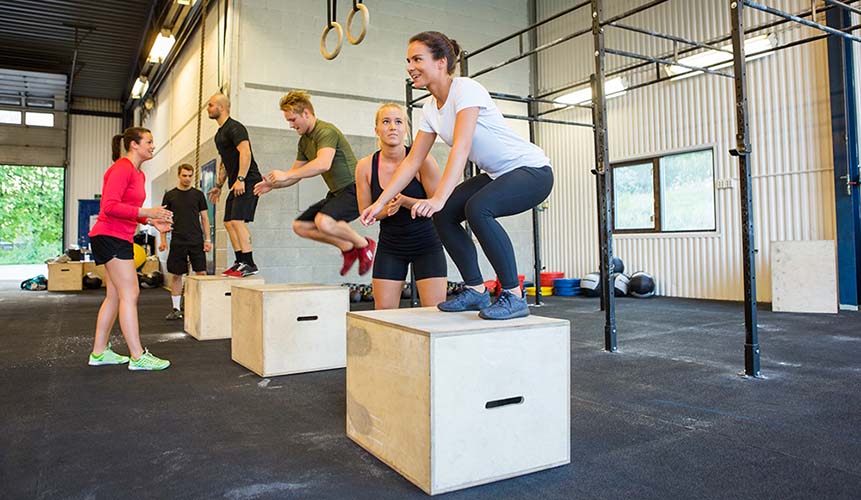Resistance training provides a measure of the fitness of our muscular and energy systems and is of utmost importance in one's wellness program. Our metabolism is based largely on our muscularity. The more muscle we possess, the more calories we can burn. This is especially important in our culture where high calorically-dense foods are abound; having a higher metabolism based on lean muscle mass will help control our weight and body composition.
Secondly, getting through our activities of daily living (ADL) often requires a requisite amount of strength. This is often demonstrated by watching those who need assistance: getting up from a chair, lifting heavy bags of groceries (books, building materials, luggage, etc.), twisting the lid off a tight jar, pulling oneself up from the ground, climbing up into the bed of a truck, etc. Lastly, resistance training helps performance in activities and sport.
Muscular Fitness, Endurance, and Strength
When evaluating muscular fitness, it is important to note which type of activity that one wants to measure: muscular endurance, muscular strength and muscular power. Each component has a strong or potential role in our lives.
Muscular Endurance is when a group of muscles can generate sub-maximal force by doing either a repeated movement or maintaining a static position over a period of time. For example, doing push-ups or pull-ups to failure, or holding onto a pull up bar until your muscle are exhausted and you can no longer hold on.
Muscular Strength is defined as the ability of a specific group of muscles to produce maximal force at a specific speed, which is typically slow and normally within a single or small number of repetitions in exertion, effort, or attempts. (Basically, lifting extremely heavy. If you can do more than five reps, you most likely aren't training for strength). Examples of activities that use strength training are: Powerlifting, Strong-man competitions, carrying heavy items.
Explosive Power

Muscular Explosive Power is when a muscle or group of muscles is able to produce an extreme force at a very high rate of movement. Examples of sports that use explosive power: Olympic lifting, long jump, shot put, sprinting, jumping onto a box, and throwing.
The key tactic to increasing lean muscle mass and muscle fitness to gain strength, endurance or power is to utilize the Overload Principle through regular and consistent application of a load or stress that is above what is customary or normal in one's training program or ADL (activities of daily living).
Interestingly, if you stress your muscles above overload, you can damage the muscle to the point of acute inflammation (soreness), tendinitis (chronic inflammation or tension), or even a muscle rupture or tear. Thus, it is crucially important to work your tissue in a consistently increasing manner. I prefer to stress a muscle before giving it two to four days to fully recovery (based on the amplitude or intensity of your previous session) before doing the identical exercise again.
Stay Consistent
Using overload and with proper recovery, one can stress a muscle group 5-15% above the previous workout. This is why it is important to be regular and consistent with your stress stimulus. In the window of 5-10 days after stressing a target muscle, one loses the ability to progress and instead one just maintains your position. 10-15 days post stimulus of target muscle, you will see a decrease in strength from the previous session. This refers to strength, and not lean mass. Muscle mass is dependent upon factors outside of resistance training, like activities that catabolize or breakdown muscle tissue (i.e. extreme bouts of activity or cardio), and diet (not ingesting proper amounts of protein necessary to keep or grow lean mass).
Diet and recovery (rest) are equally important in this equation to gaining strength and lean mass. We must acknowledge that until about age 25, it is fairly easy to gain muscle but as we age past 25 years, our ability to gain and keep muscle diminishes. Therefore, a balanced program can help maintain one's vitality and muscularity.
In summary, resistance training when applied purposefully and with methodical consistency can stimulate desired muscular gains in strength, endurance, and power.
Rob Murray is the owner of A Balanced Body Studio and the Orlando School of Thai Massage in Winter Park, FL. With degrees in Exercise Science, he and his wife, Dana, began their wellness studio nearly 20 years ago, specializing in private and small group instruction of yoga, Pilates, massage therapy, and personal fitness.
